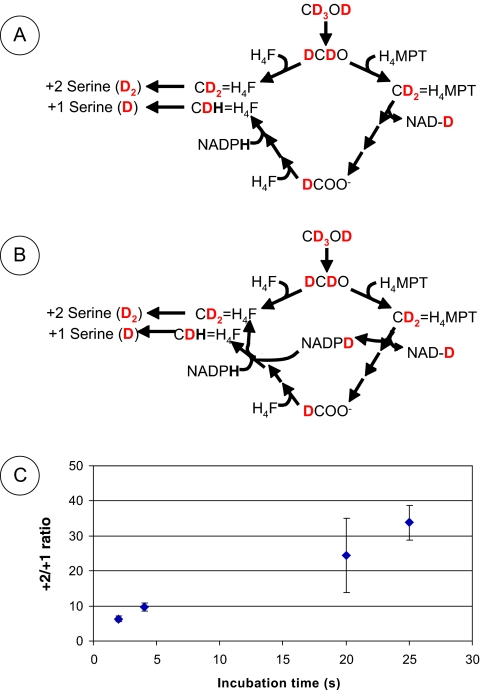FIG. 2.
The assay for methylene-tetrahydrofolate synthesis routes in whole cells using deuterated methanol (CD3OD). (A) Spontaneous condensation consists of joining formaldehyde (in this case, DCDO) and H4F to form doubly deuterated methylene-tetrahydrofolate (CD2=H4F). In the alternate pathway, the one-carbon unit is joined to H4MPT, released as formate (DCOO−), and then joined to H4F, leading to the formation of CDH=H4F. In this scheme, no significant NADPH (NADPD in this experiment) is produced from the H4MPT pathway, and the ratio of doubly deuterated (D2) serine to singly deuterated (D) serine reflects relative fluxes through the spontaneous and alternate pathways. (B) In this scheme, it is assumed that significant NADPH (NADPD in this experiment) is generated by the H4MPT pathway. Contamination of the NADPH pool with deuterated NADPH produced after metabolism of deuterated methanol will increase the amount of +2 serine at the expense of +1 serine, leading to an overestimation of flux through spontaneous condensation. (C) Effect of assay incubation time on the ratio of +2 serine to +1 serine in methanol-grown cells.

